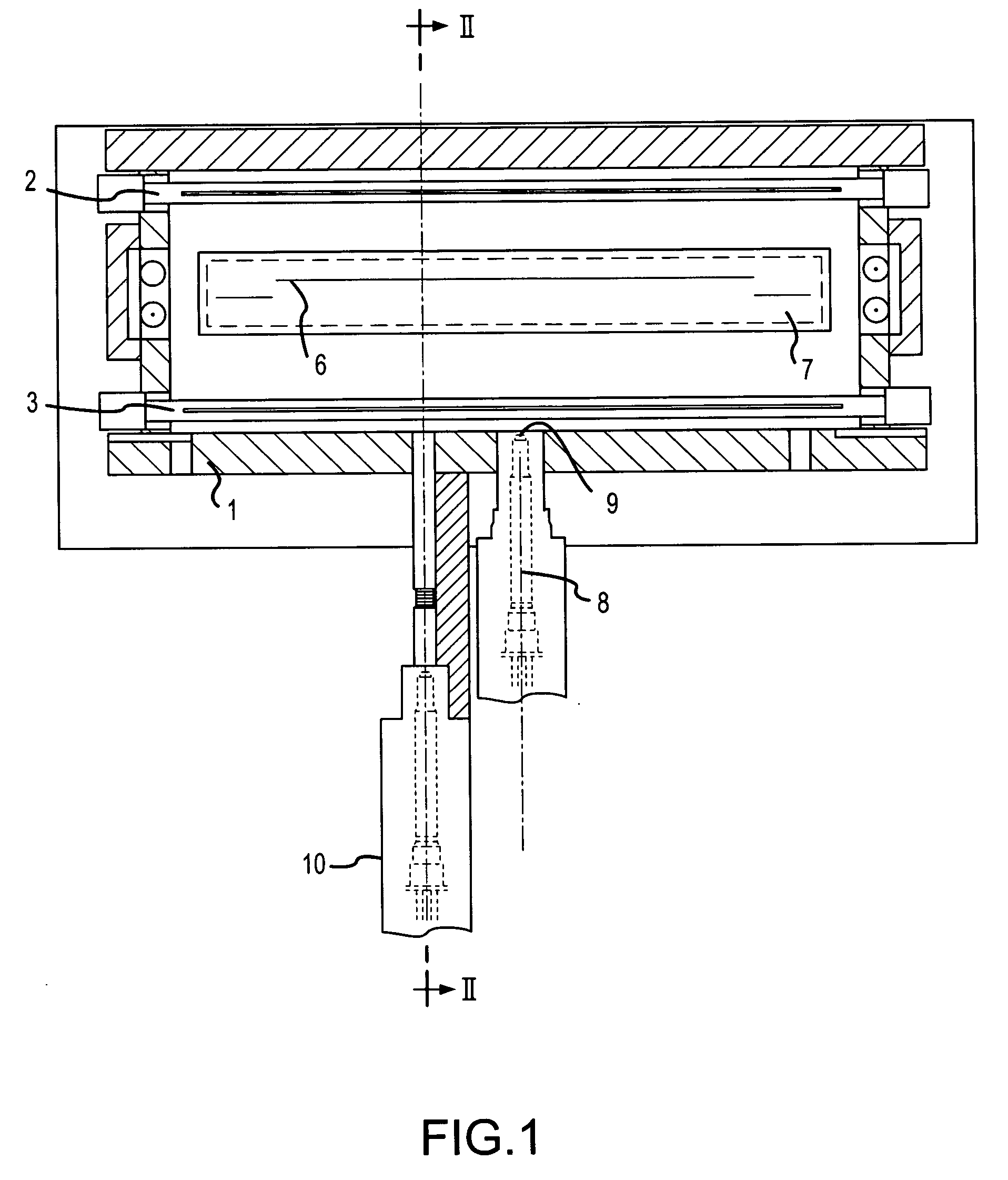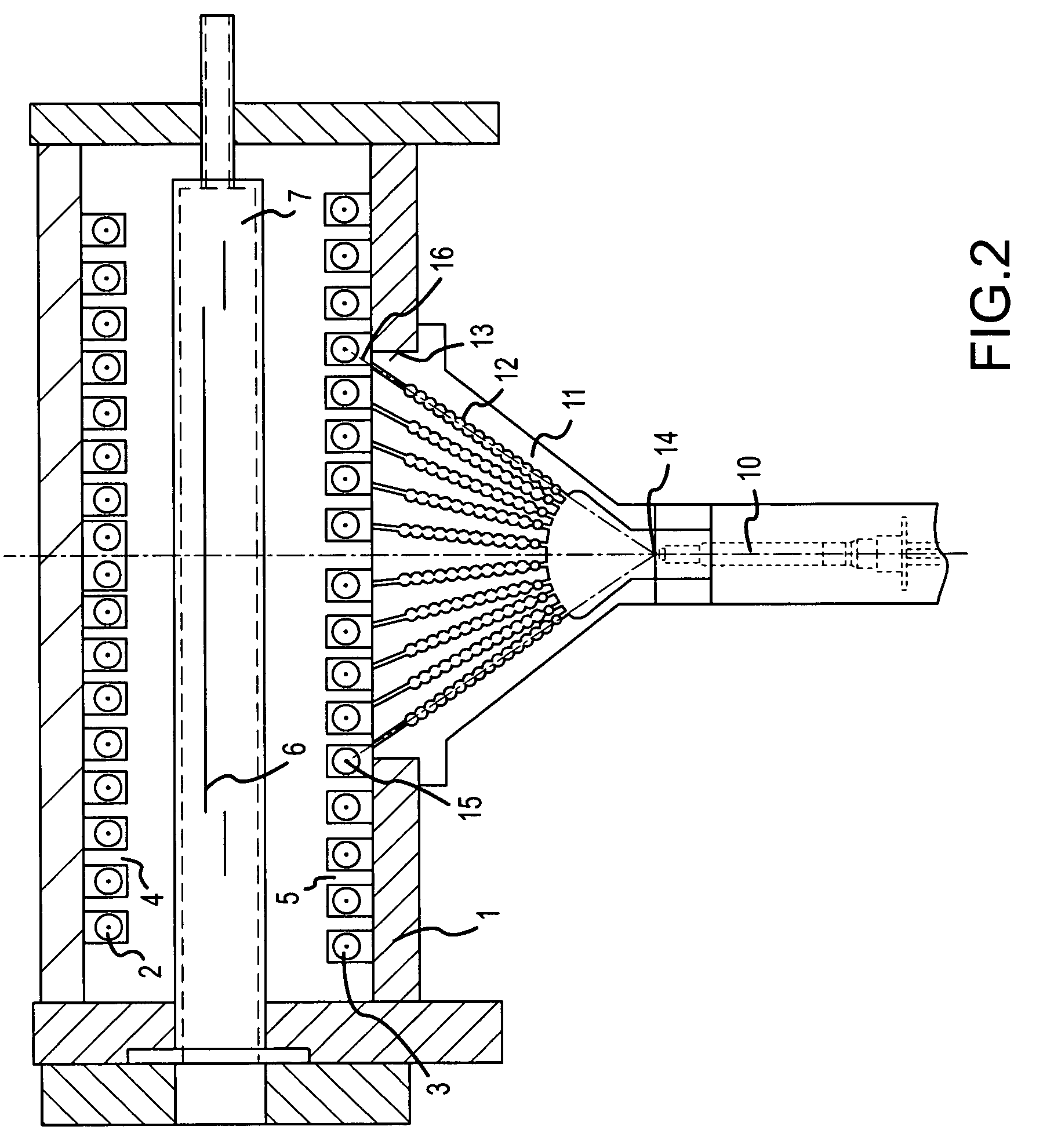Apparatus and method for measuring the temperature of substrates
a technology of substrates and apparatuses, applied in the direction of optical radiation measurement, muffle furnaces, furnaces, etc., can solve the problems of temperature drift, limited heat transfer speed of substrates, and limited cooling rate of substrates
- Summary
- Abstract
- Description
- Claims
- Application Information
AI Technical Summary
Benefits of technology
Problems solved by technology
Method used
Image
Examples
Embodiment Construction
[0056] The rapid heating oven illustrated in FIGS. 1 and 2 has a housing 1, to the upper and lower interior wall of which are attached banks of lamps 4, 5 comprising a plurality of individual lamps or individual lamp tubes 2, 3, which heat a semiconductor wafer 6 that is arranged in a reaction chamber 7 between the banks of lamps 4, 5 in the housing 1.
[0057] Advantageously the reaction chamber 7 essentially comprises a material that is largely transparent for the lamp radiation, which material is also transparent with regard to the measuring wavelengths or measuring wavelength spectra of the pyrometers or the radiation detectors used. Using silica glass and / or sapphire, which have an absorption coefficient of approximately 0.1 1 / cm to 0.001 1 / cm determined via the lamp spectra, reaction chambers that are suitable for rapid heating systems can be built in which the thickness of the reaction chamber wall can be between 1 mm and several centimeters. The material can be selected in ter...
PUM
| Property | Measurement | Unit |
|---|---|---|
| thickness | aaaaa | aaaaa |
| thickness | aaaaa | aaaaa |
| reflectivity | aaaaa | aaaaa |
Abstract
Description
Claims
Application Information
 Login to View More
Login to View More - R&D
- Intellectual Property
- Life Sciences
- Materials
- Tech Scout
- Unparalleled Data Quality
- Higher Quality Content
- 60% Fewer Hallucinations
Browse by: Latest US Patents, China's latest patents, Technical Efficacy Thesaurus, Application Domain, Technology Topic, Popular Technical Reports.
© 2025 PatSnap. All rights reserved.Legal|Privacy policy|Modern Slavery Act Transparency Statement|Sitemap|About US| Contact US: help@patsnap.com



